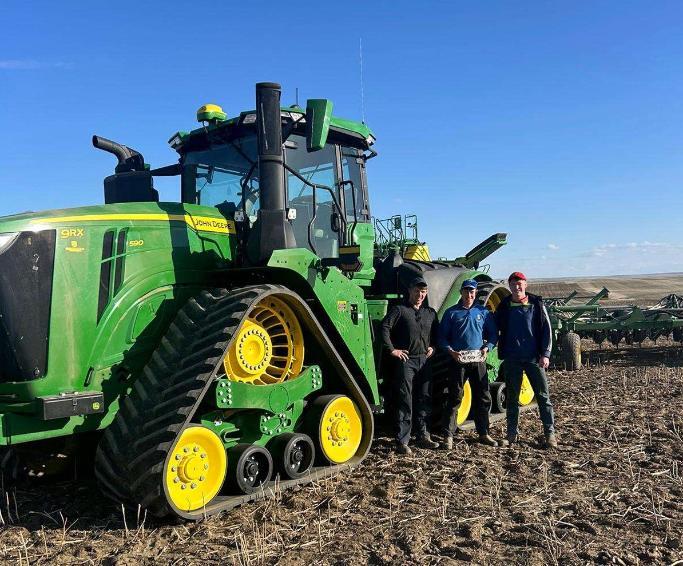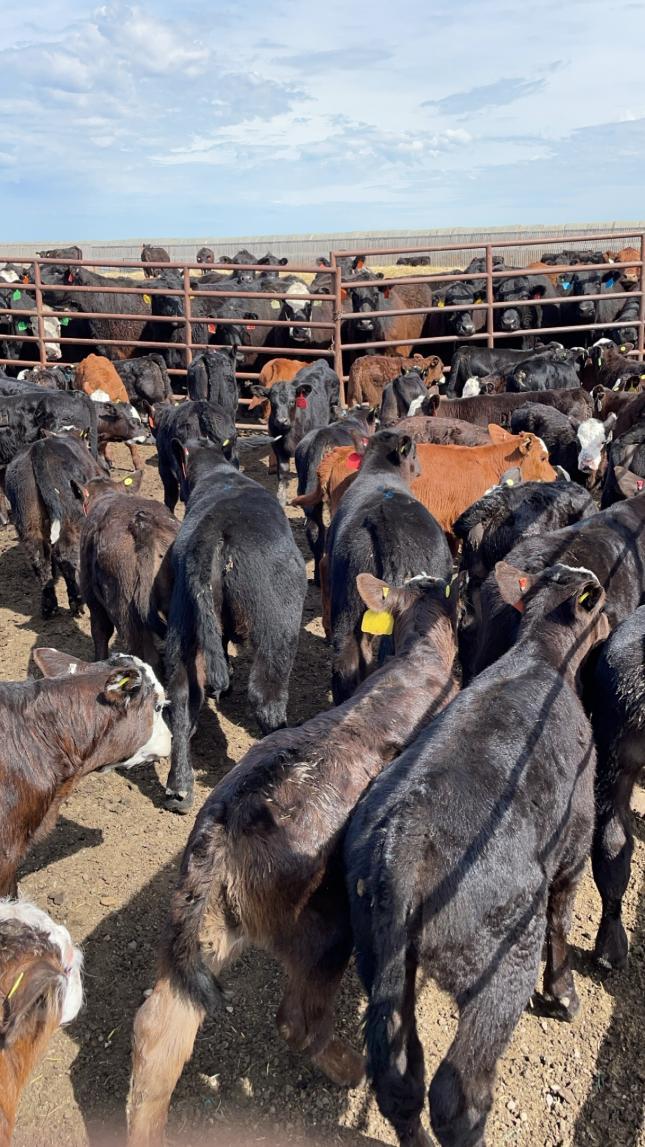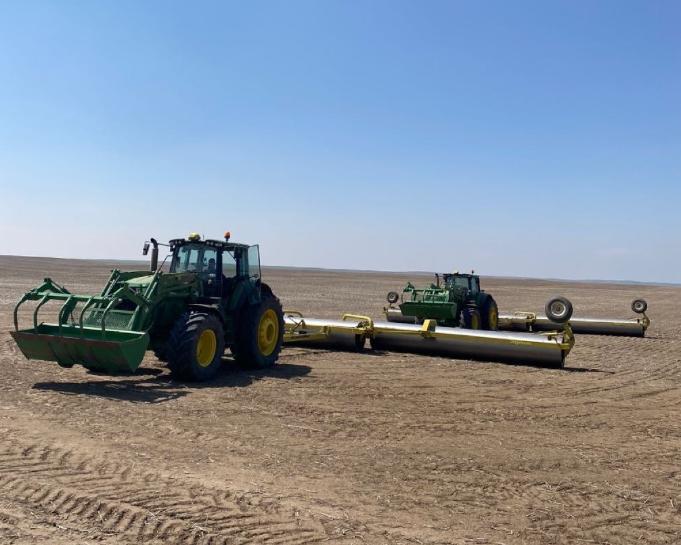PWE - Why it's one of the best thing about studying Ag & Food Science
News
- AgriFood Matters Podcast Series
- Recent News 2022
- Recent News 2023
- 22/23 School Awards Ceremony
- UCD Teagasc Knowledge Transfer Funded Masters 2023
- SAFS Achieves First Silver Athena Swan Award in UCD
- Ensuring Food Security on the Island of Ireland
- UCD Masters in Agricultural Extension and Innovation Webinar
- UCD Horticulture develops 'Top 10 Pollinator-friendly Plants' guide
- UCD & Macra Agricultural Skillnet - MSc Agricultural Extention and Innovation
- Ireland’s Claire Mc Cormack is first visiting global agricultural journalist
- ‘Sustainable Food Systems’ the theme at the Agri Aware and UCD stand at the National Ploughing Championships
- UCD leads ‘Ireland Day’ at Science Summit at UNGA78 in New York
- BAgrSc class of 1983 reunion
- UCD School of Agriculture and Food Science Alumni Profile
- Leading UCD, Queens and Sheffield researchers awarded €31.5 million to transform food system
- School of Agriculture & Food Science Awards 2023
- Dr Helen Sheridan appointed to the Teagasc Authority
- BSc Sustainable Food Systems
- Exciting PhD Opportunity
- Graduate Spotlight: Richard Shakespeare
- Graduate Spotlight: Seán Molloy
- Coillte Launches New Foresty Scholarship Programme
- My Uni Life returns to RTE featuring UCD students & Lyons Farm
- University College Dublin researchers recruiting horses for Equine Headshaking Syndrome research.
- Farming Minds Project
- One Health: UCD launches pioneering new centre for better health of people and the planet
- UCD Agriculture, Food Science & Human Nutrition Careers Day 2024
- Farm Walk and Talk Returns to Lyons Farm
- UCD Teagasc Knowledge Transfer Funded Masters 2024
- UCD SAFS celebrates St.Patricks Day in China
- Crillo Cattle - Could heat resistant cattle be the industry's answer to climate change?
- Emerging Greentech Start-Up Wins UCD’s 2024 VentureLaunch Accelerator Programme
- UCD Summer Schools 2024
- UCD School of Agriculture & Food Science Graduate Taught Webinar Series
- A number of exciting PhD Opportunities Available
- Our Rural Future: Minister Humphreys launches first ever bursary to support Masters Students in field of rural development
- New collaborative research centre to transform food system launches at UCD
- PWE - Why it's one of the best thing about studying Ag & Food Science
- ‘We need a one-cycle agri-food system,’ says FAO Director General
- Aoife Feeney - Studying at UCD through DARE
- Beef-Quest Research Project aims to Reduce Age of Cattle Finishing
- UCD School of Agriculture & Food Science Celebrates it's new Class of 2024
- Adaptive predator management to promote breeding wader conservation
- GDIC Conferring Ceremony 2024
- The launch of the new FBD UCD agricultural research and education centre takes place at UCD.
Three of our Animal and Crop Production students; Donal Murphy, Jack Ryan and Shane O’Brien are currently on their professional work placement or PWE at Dustin Hawkins Farm in Saskatchewan, Canada.
When asked about their time in College, Ag and Food Science students hands down say that the PWE is the best part of their 4 years. We hear from Donal, Jack and Shane about their time at the Dustin Hawkins Farm and what makes the PWE such a memorable and enjoyable experience for all students.
As part of our Professional Work Experience for our degree programme we were afforded the chance to travel to see and experience farming systems across the world. We saw this as a great opportunity and became interested in travelling over to Dustin Hawkins beef and Tillage farm in Saskatchewan, Canada. Dustin has taken Ag Science students for many years now and has always had a good reputation from past students who have completed placement with him. As a result of this we contacted Dustin and started discussing the possibility of completing PWE on his farm. Dustin informed us that his calving window was changing this year and informed us that coming from the start of April to the middle of June would be the best time to come and experience the most from the beef and tillage enterprises.

We travelled out to Canada in the second week of April and our placement is planned for 10 weeks on Dustins farm. We flew from Dublin to Toronto and then onto Regina where we met Dustins son. Dustins son brought us home to near Kincaid which is just under 3 hours away from Regina. We were instantly welcomed by Dustins family and were shown our accommodation in a large mobile home in one of the yard. We were also given a pickup truck to travel to work each day at the main farm.
We started off working with cattle, Dustin is calving around 750 suckler this spring in 2 batches. This is a change from the calving system the farm used last year as was introduced to reduce the workload and try have the cows calving in better weather conditions as all cows calve outside. The first batch of 250 cows calve in the corrals which are outdoor pens at the farm yard. These pens are bedded with straw regularly to try keep conditions warm for calving when the weather is poor. The weather has ranged from minus 9 to 27 degrees while we have been here, the second batch are wintered at the main yard and then drawn to pastures as far as 120km away from the yard. Our work with the cattle involved tagging calves, sorting pairs, branding calves, banding bull calves and giving them a hormone implant behind their ear. Prior to the cows going out to pasture we checked all the fences in Dustins 9100 acres of pasture. Once the pastures were ready we started hauling cows out using 2 stock trailers and 2 artic lorries.

After the first 2 weeks the focus turned to seeding, the first job that we were given was treating the seed which was done by one of us usually along with another workman. After this we started preparing machinery for the seeding season, this involved helping calibrate the new 90ft seed drills which the farm was running this year and moving the land rollers and other equipment to the fields. Dustin had seeded 5000 acres of rye in the fall of 2023 and had planned on seeding an additional 13,000 acres while we were there. This included 1500 acres of durum wheat, 6000 acres of lentils and 5500 acres of canola or oilseed rape. The seeding lasted between 3 and 4 weeks and was broken up due to wet weather which the farm hasn’t had in 7 years. While the seeding was in full flow we were driving brand new 90ft seeders, 50ft land rollers and 132ft sprayers, this really hit home the sheer scale of farming out here to us and the investment made by farmers out here to farm at such a large scale.
Our experience out here so far has been very good, and is one that we’ll never forget. The scales of farming and the management of farms of this size are really eye opening, another thing that stuck out to us is the use of precision technology and the productiveness and efficiency of the machines used on the farm, for example one day we seeded just under 1300 acres using the 2 seeders. These levels of productivity is what is required to farm at such a scale. From the cattle enterprise perspective we were surprised by the lack of rules and regulations around cattle, the cattle are branded with theDHsymbol and are tagged with a colour tag and a number just for management purposes without the need to register any cows or calves. Overall we have really enjoyed working with each other on this farm and the work has been really enjoyable. We have been given such a variety of work that has kept us from getting complacent, the weeks so far has flew by and we have been given plenty of work which has helped as we are very isolated from towns/cities out here but this is made little by the experience we have had working on Dustins farm.
